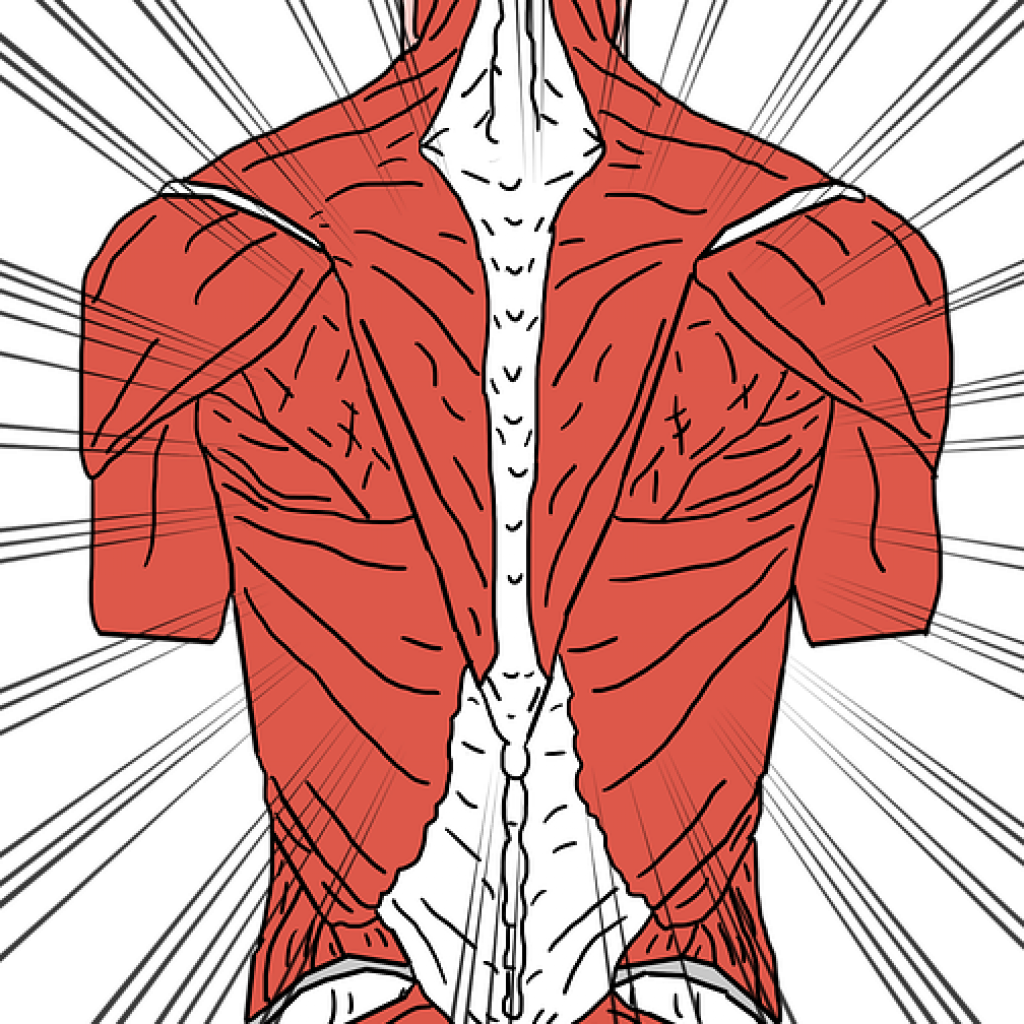Stretches for Sciatica: 19 You Should be Doing
 Stretches for Sciatica: 19 You Should be Doing
thegearhunt.com
Stretches for Sciatica: 19 You Should be Doing
thegearhunt.com
While many people have no idea what you’re talking about when you mention the pain and numbness of sciatica, so many other people do. Sciatica by definition is a condition that causes pain in your lower back and is caused by irritation or pressure on the sciatic nerve.
The sciatic nerve runs through your spinal canal from the lumbar region and reaches all the way through to your lower legs below your knees. It’s the longest nerve in your body and is responsible for many things to do with your body, including carrying signals to and from your legs.
The one thing we want to make clear from the beginning is that you shouldn’t just ignore the symptoms of sciatica. If you feel that you have any of the signs and symptoms we are going to talk about, it’s best to make an appointment with your primary health care provider for diagnosis and treatment right away. We will go into the top dangers associated with not getting treatment for your sciatica in this blog, as well as the things listed below.
There are a host of different signs and symptoms associated with sciatica that we will go into our blog. We’ll also go into the causes and treatments, including a few of the stretches you can do to relieve some of the pain and numbness associated with this painful condition. So, without further ado let’s get started on our blog about sciatica and things you should know, plus the stretches you should be doing to help the pain.
Causes of Sciatica Revealed
It’s important to know the causes of sciatica before you can get effective treatment, so we will delve into those first.
Pregnancy
We all know the many, many changes your body goes through during pregnancy from hormones to weight gain and from a shift in gravity to mood swings. Many of these changes can contribute to and cause sciatica during pregnancy. If you’re experiencing the symptoms of sciatica when you’re pregnant, it’s best to talk to your doctor about treatment options.
Built Up Scar Tissue
Scar tissue comes from many different things, operations, accidents, and more. If the scar tissue builds up around and compresses the lumbar nerve root, then it can cause sciatica.
Muscle Strain
Believe it or not, a simple muscle strain, a lower muscle strain that is, can cause pressure to build upon the nerve root and cause sciatica symptoms.
Spinal Tumor
In rare cases, a tumor that develops on the spine can cause pressure on the sciatic nerve leading to sciatica.
An Infection
While it is rare, it is possible for an infection to spread to the nerve root if it is an infection in the lower spine and cause sciatica pain.
A Fracture
If a fracture, due to a traumatic injury, car accident, a fall, or even a weakening of the bone, occurs in a lumbar vertebra it can lead to sciatica as part of the symptoms as well.
Other Common Causes of Sciatica
These are a few of the more common causes of sciatica. Below we will list a few more for you to do your research on as well.
- A lumbar herniated disc (need to see a doctor)
- Degenerative disc disease (need to see a doctor)
- Isthmic spondylolisthesis (need to see a doctor)
- Lumbar spinal stenosis (need to see a doctor)
- Piriformis syndrome (need to get medical treatment)
- Sacroiliac joint dysfunction (need to get medical treatment)
These are a few more causes of sciatica that you need to watch out for. Now, that we know what it is and what the causes are, let’s move into a few of the signs and symptoms to watch for if you think you have sciatica.
Signs and Symptoms that You Might Need to be Checked for Sciatica
There are a host of signs and symptoms that come with having sciatica. Below we will go into a few of them together.
Sciatic Pain
The most obvious and the most often reported symptom of sciatica is the pain that comes with it. It’s described as a jolting pain that feels like a jolt of electricity coursing down your leg. It usually begins if you cough, sneeze, or sit in one position, on one side for a prolonged period of time.
Many patients mistake this for a pulled muscle instead of sciatica it is, so if you have symptoms please go ahead and make an appointment with your primary doctor for treatment.
A Loss of Bladder and Bowel Function
Although completely losing control of your bladder and bowel function is rare with sciatica it can occur if the condition isn’t treated. Sciatica has been known to put pressure on the nerves around the bladder and bowels and can cause you to lose control of either, making for some embarrassing situations for you, and anyone you might be with at the time.
Swelling and Inflammation
Inflammation and swelling are often a part of sciatica as well. It is also said that in 80-percent of cases sciatica pain resolves itself, but it’s still best to be checked out by your doctor.
Joint Weakness in One Leg
Another common sign of sciatica is having joint weakness in just one of your legs, or even pain in just one of your legs is a red flag and a warning that you need to be seen for a diagnosis. The weakness can occur at any point along the sciatic nerve. So, if you have a problem with joint weakness in one leg that persists it is best to be seen.
Your Symptoms Are Getting Worse
Sciatica symptoms usually get better over time, if they are mild. However, if any of the signs and symptoms above happen to you and get worse over time, it’s time to be checked out by a doctor.
Severe sciatica can be dangerous if not treated. We will go into a few of the top dangers below, so you know what you’re dealing with.
Dangers of Leaving Sciatica Untreated
We already know that sciatica is a very painful condition that more people suffer from than you might think. However, what many people don’t know is it can lead to more serious problems if ignored and left untreated. We will talk about some of those dangers in the next section of our blog.
Nerve Damage
The longer a severe case of sciatica is left untreated the more likely it is that you will end up with severe nerve damage. This damage can be permanent meaning that the pain will only get worse, resulting in no medication, stretches, or other treatment methods working for you.
Complete Loss of Bladder Control
The reason it is so important to seek medical help when you first notice the symptoms of your sciatica worsening is because it could lead to problems with bladder control that may become irreversible.
Loss of Feeling in that Limb
In extreme cases of sciatica, it is possible to lose feeling in the affected limb. This will not only worsen your pain but limit your mobility as well, something no one wants to experience.
These dangers are something you don’t want to have to deal with, with your sciatica, so if you have symptoms that are not correcting themselves or are getting progressively worse, it’s best to be checked out by your primary health care provider as soon as possible.

Stretches and Exercises that Work to Relieve the Pain of Sciatica
If you have ever suffered from the pain of sciatica, whether temporary or something more lasting, then you already know that you will do just about anything to get relief from the tingling, numbing pain. While there are prescription meds that help, and in worst case scenarios, surgery could be an option, it is best to try and relieve the pain naturally if you can. Below we will give you a list of stretches and exercises, through yoga, that will help relieve your discomfort. Do your research on these to figure out which are the best stretches for you.
- Wide-Legged forward bend
- Reclining hand-to-big-toe pose
- Child’s pose
- Downward dog pose
- The high lunge
- Pigeon
- Eye of the needle pose
- Fire log pose
- Windshield wiper twist with foot over leg pose
- Knees to chest pose
- Standing twist
- Knee Hugs
- Cat/Cow
- Supine twist
- The supine twist with one knee
- Seating twist
- Lunging twist
- Cobbler’s pose
- Thread the needle
While these stretches and exercises help to dull and get rid of the pain of sciatica, it is still best to consult your primary health care provider before you try any of them out. He can tell you which poses are best for you, or if they will make your condition worse. It’s always best to be safe than sorry when it comes to doing anything you aren’t used to doing for your sciatica pain or any other type of condition you might be suffering from as well.
Now, that we have listed some of the stretches that might help you with the pain of sciatica, let’s move into a few tips for the pain that might help as well.
Tips for Controlling the Pain of Sciatica
While the stretches work well, and your doctor will recommend more stuff you can try, we figured we would give you a few tips here as well.
Get a Massage
Massaging the muscles of the legs and buttocks can help to relieve some of the pain associated with sciatica. It helps to promote blood flow to the sciatic nerve and relieve some of the tension you’re feeling, which helps as well. Try scheduling a massage to get some relief, you might be surprised at how much better you feel.
Apply Cold and Hot
You would be surprised at how effective switching from a cold compress to a hot heating pad and back will help to relieve the pain. This will promote blood flow and reduce the tension you’re feeling in your lower back, buttocks, and legs.
Pain Killers
If you’re anything like us, you would rather do it all the natural way if at all possible. You have to face the fact that with sciatica sometimes the all-natural way just isn’t going to work. Sometimes you have to take something for the swelling, inflammation and the pain. Over-the-counter meds work well for this, but if they aren’t bringing you any relief either, it’s time to talk to your doctor about an alternative treatment plan.
Acupuncture
If needles don’t bother you, then you might want to try acupuncture as well for relief. It has been known to work wonders with sciatica, so it’s well worth giving a try.
Topical Ointments
There are a few topical ointments out there that will help with the pain of sciatica as well. Most of these gels contain menthol, which is soothing and helps with the pain.
Back Support Aids
If you already have sciatica, then sitting in an uncomfortable chair all day long at the office will only make it worse. However, you can’t afford to just quit your job, none of us can. Instead, try investing in a good office chair that provides adequate back support to keep your buttocks and lower back from becoming inflamed and causing an attack to happen.
Other Tips for Finding Relief from the Pain of Sciatica
- Physical therapy
- Hydrotherapy
- Bed rest
- Chiropractic care
- Exercise
- Injections
- Surgery
Some of these tips are a little more extreme than others, so it’s important to try natural and less invasive methods of controlling the pain first. If these don’t work, then it’s time to get with your doctor to discuss other options.
This concludes our blog on sciatica and everything you need to know, stretches included. Until next time, stay pain-free everyone!
Sources:
- Active Beat: 5 Tell-Tale Sciatica Symptoms
- Workout: Top 10 Yoga Poses for Immediate Sciatica Relief
- Spine Universe: 6 Leading Causes of Sciatica


















